Protection against Jellyfish
No matter how beautiful (and innocent) jellyfish look, they can be very dangerous. A number of species are venomous. Jellyfish consist of 95 percent water. The other five percent consists of cells, a stomach and a mouth. In addition, a jellyfish has tentacles which can cause a painful and sometimes even deadly bite. With such a bite, the skin comes into contact with the venomous glands on the tentacles of the jellyfish. Read below about which jellyfish to watch out for, what the dangers are and where you can encounter certain species. We also provide tips on how to prevent and treat a bite. Technically, jellyfish do not actually bite, but when touched, they thrust venomous harpoons into their prey.
Types of jellyfish
Most jellyfish bites mainly hurt and are generally harmless. However, there are a number of jellyfish that can be dangerous and even fatal. Read below which jellyfish you have to watch out for and where to find them. Some are closer to home than you think!
Compass jellyfish
The first on the list is the compass jellyfish. This is one of the most common jellyfish in the North Sea and is easily recognisable by its brown V-shaped stripes.
The tentacles of this jellyfish can be as long as 5 meters, which makes it easy to get bitten. A bite from the compass jellyfish can be painful but is usually harmless. If symptoms such as headache, vomiting and breathing problems occur, always consult a doctor. You may be allergic to this jellyfish. You will usually find the compass jellyfish in the summer months, not in the spring and autumn.
Fun fact: the compass jellyfish starts its life as a male and slowly morphs into a female!
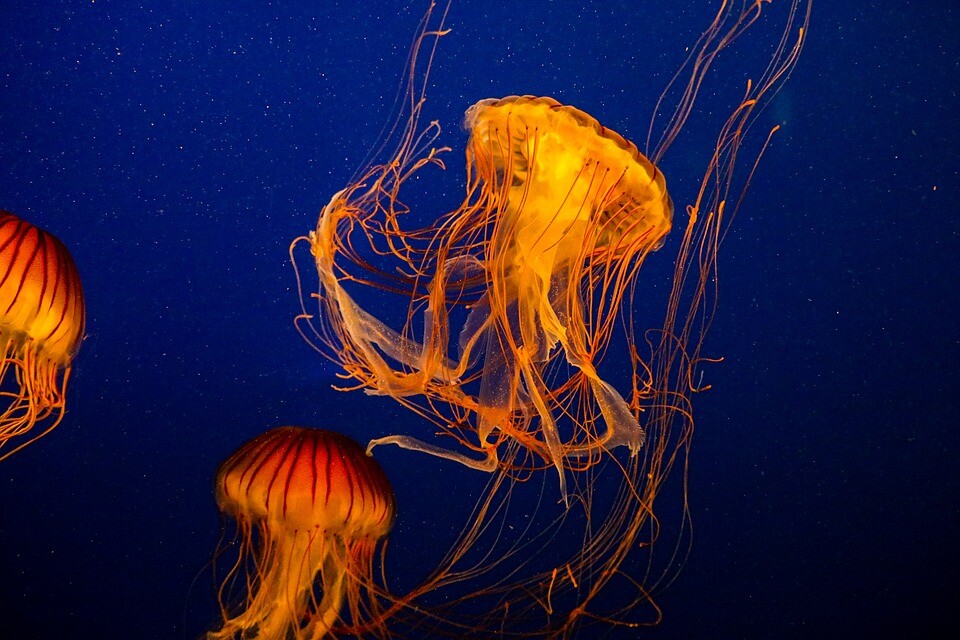
Portuguese Man o’ War
In the warmer oceans of the world, the Portuguese Man o’ War is a notorious and feared jellyfish. Although it is not really a jellyfish, it is often associated with jellyfish. This jellyfish consists of hundreds of coelenterates that are called polyps. All these polyps live together under an air-filled gas bubble. Each polyp has its own task within it, including catching food and taking care of reproduction.
The Portuguese Man o’ War is 9 to 35 cm on average and has tentacles that can grow up to 50 metres. Fortunately, this jellyfish does not occur in the North Sea, as it is too cold for this type of jellyfish to survive. This jellyfish has been found on the Spanish islands of Mallorca, Menorca and Ibiza. You will encounter this jellyfish in warmer waters such as the Atlantic Ocean and the Indian Ocean.
A bite from the Portuguese Man o’ War is not necessarily deadly. The venom of the jellyfish can cause paralysis of the muscles in humans. If this happens to the heart muscle, a heart attack will occur. Paralysis can also occur in other muscles.
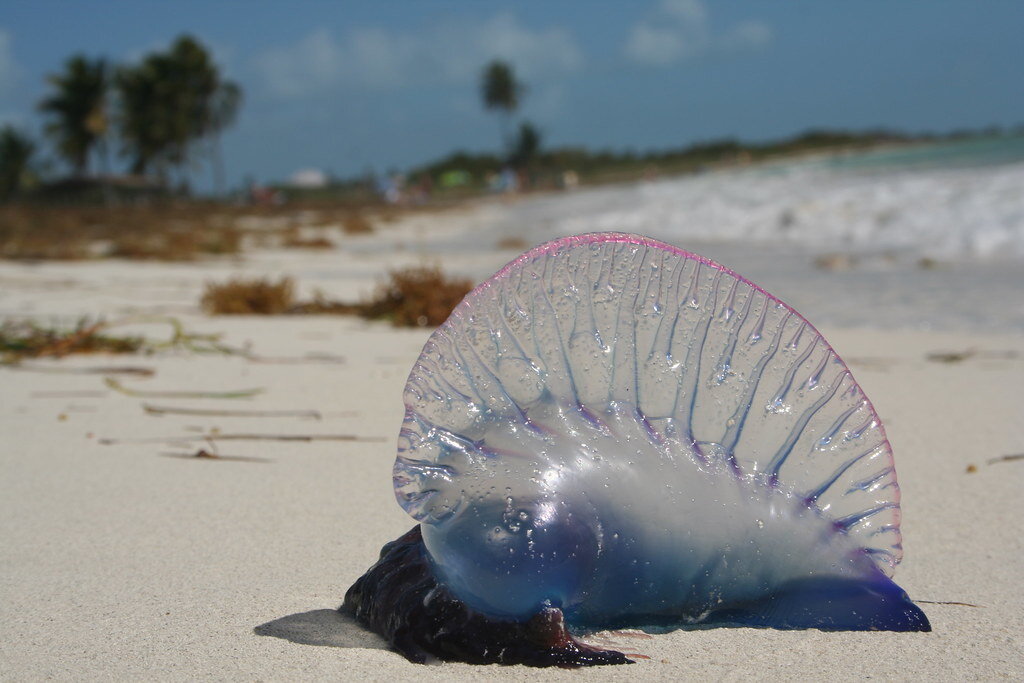
Irukandji
The Irukandji, also called mini box jellyfish, is a jellyfish that belongs to the family of box jellyfish. Unlike the Portuguese Man o’ War, this jellyfish is fatal to humans. This jellyfish is the size of a fingernail, has four tentacles with a length between 5 and 50 cm and can hardly be seen in the water with the naked eye.
A bite of the Irukandji can be deadly within minutes. The venom that enters the bloodstream of the skin attacks the oxygen cells, which can cause a heart attack in a very short time. Because the poison of the Irukandji is so strong, this tiny animal is the most dangerous animal on earth according to many scientists.
The Irukandji is mainly found in Australian waters. However, this type of jellyfish has also been spotted in the Indian Ocean near Thailand and Hawaii. Because of the warming of seawater temperature, the habitat of the box jellyfish is increasing.
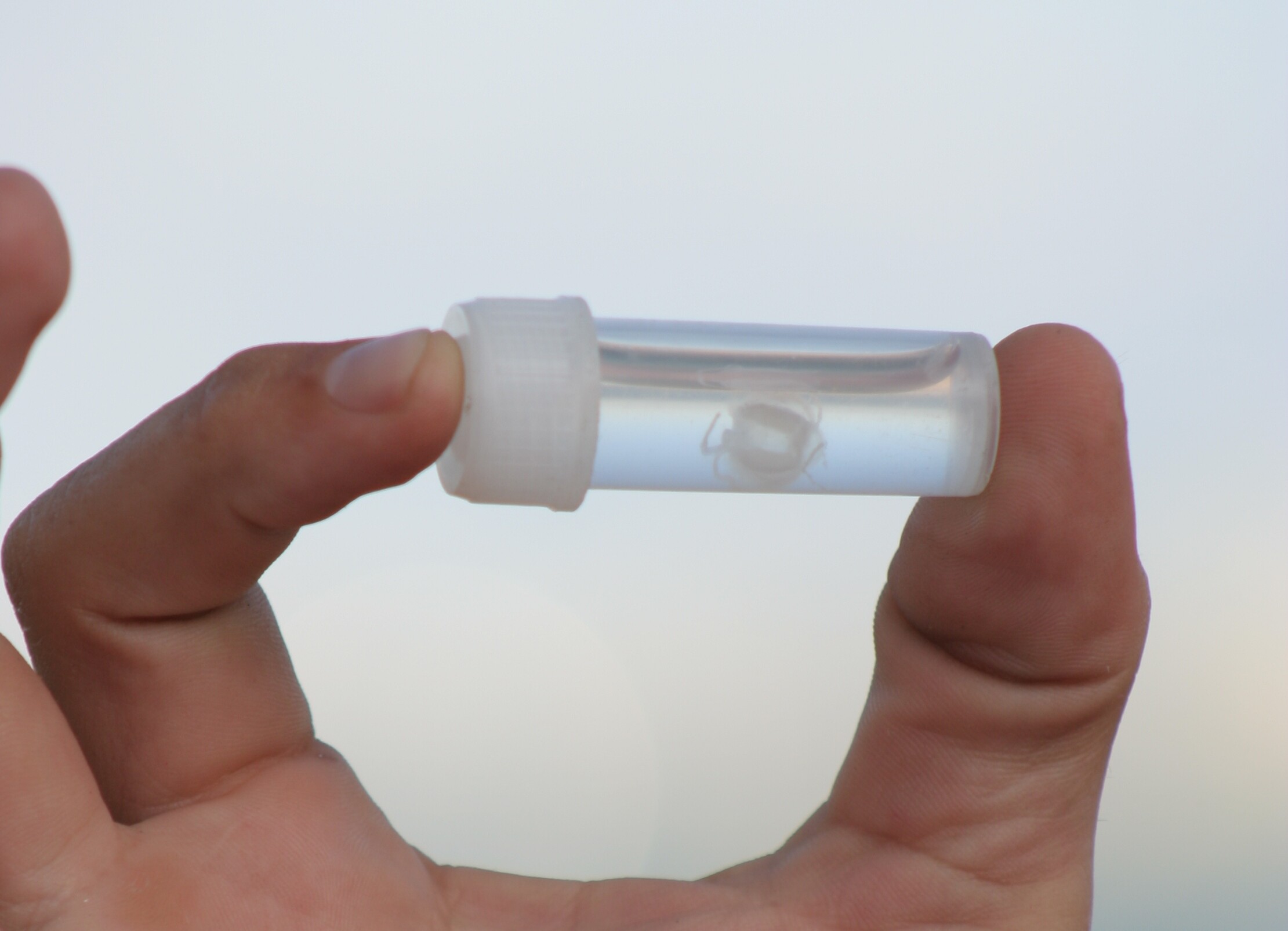
Irukandji (Carukua barnesi)
Australian sea wasp
The Australian sea wasp also belongs to the box jellyfish but is more visible in the water compared to the Irukandji. The jellyfish has tentacles that can grow up to three metres.
Together with the Irukandji, it is one of the most venomous animals on earth. The venom from the Australian sea wasp is strong enough to kill 60 adults. Within a few minutes, a victim can lose consciousness and stop breathing. Hundreds of victims worldwide have been killed by this jellyfish. If the victim survives the bite, they can still be in pain for weeks and have scarring at the site of the bite.
The Australian sea wasp is found on the coasts of Australia, New Guinea, Indonesia, the Philippines and Vietnam.
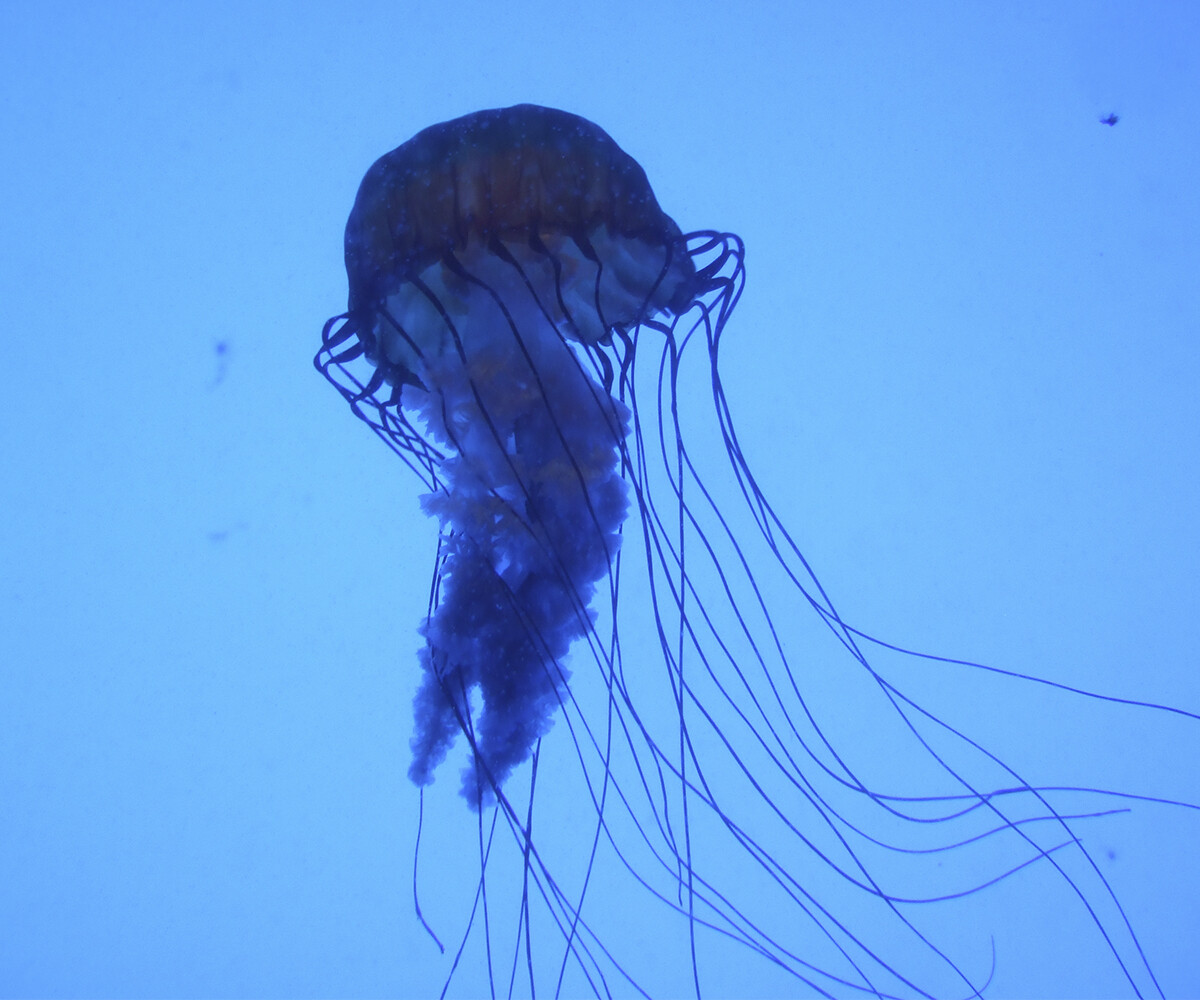
Protection against jellyfish bites
Always protect yourself against a jellyfish bite. Avoid loose tentacles of jellyfish and apply a water-resistant sun lotion that protects both against harmful UV rays of the sun and most jellyfish bites, including those from the Portuguese Man o’ War, deadly Irukandji and Australian sea wasp.
Sun Protection Everyday Lotion contains the active ingredient Safe Sea Lotion. The Stanford University School of Medicine tested the effectiveness of this medicine among 24 volunteers.
Safe Sea Lotion prevented a bite in 19 out of 24 volunteers and reduced the effects of the bite in so many of the 5 remaining volunteers that they hardly had any problems with it. There were also no clear signs of a bite on anybody, while these were visible in the people who were given the placebo. It has been established that Care Plus® Safe Sea Lotion considerably reduces pain and skin reactions and can even prevent a jellyfish bite.
Another preventive measure against potential jellyfish bites is wearing a wetsuit. This suit not only protects against hypothermia, but also against jellyfish bites. We recommend applying Safe Sea Lotion to the area of exposed skin near the face. We also recommend obtaining information in advance about any nuisance caused by jellyfish on the coast(s) you are about to visit.
Treating a jellyfish bite
Prevention is always better than cure, but if you do get bitten by a jellyfish, there are different ways to treat the area of the bite:
• The use of vinegar is recommended in (tropical) foreign countries. This neutralises the venom and can relieve the pain. However, vinegar doesn’t work with all jellyfish bites. Always ask the locals for information in advance.
• Rinsing with saltwater can limit the effect and can have a cooling effect. It’s best not to use fresh water, as this can reactivate the stinging hair, making the symptoms worse.
• Despite the unpleasant itch, we strongly advise against rubbing.
• The use of ammonia is not recommended. In the past, ammonia was placed on a compress on the affected skin, but this causes skin burns.
• Sucking out jellyfish bites is not useful, it only damages the skin.
We recommend always consulting a doctor in the event of serious symptoms following a jellyfish bite.
This is how a jellyfish works
The tentacles contain innumerable explosive cells (nematocytes) from which harpoons are thrust. This allows the jellyfish to catch plankton and fish. As soon as a prey comes into contact with these tentacles, it is usually killed immediately and transported through the tentacles to the mouth. The mouth is at the bottom with the mouth tentacles in the four corners. A number of species have nematocytes that can penetrate human skin with venom. See in the video below how a jellyfish works!

Sun Protection Every Day
Ideal for taking to the beach or on holiday. You apply it quickly and easily. Care Plus® Sun Protection Lotion is suitable for normal and sensitive skin and available in SPF 30+ and SPF 50+. This unique formula also protects you against jellyfish stings.
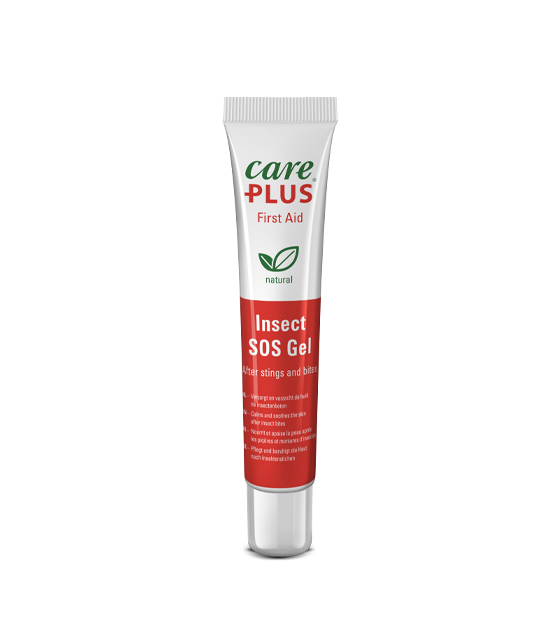
Care Plus® SOS Bite Gel
It has a soothing, cooling and calming action when used for treating an insect bite or sting, such as the mosquito, wasp or horsefly. This gel is also soothing after a jellyfish sting or after contact with stinging nettles.
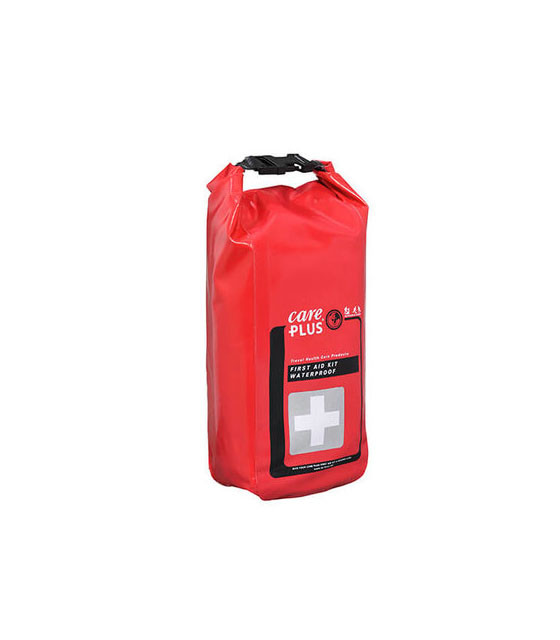
Waterproof First Aid Kit
A comprehensive First Aid Kit in a watertight bag. Suitable for active outdoor sports, water sports and travel to tropical regions.
